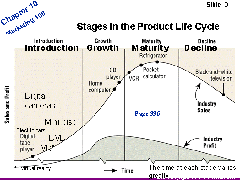The last decade and a half has also seen the emergence of the World Wide Web, which now provides so much information about the lifecycles of products as varied as airplanes, cars (PDF), pharmaceuticals, isomerization units and muffin mix, as well as packaging and WEEE recycling in the UK and China.
Another change is that, in the 1980's, leading companies had recognized the need for Simultaneous Engineering / Concurrent Engineering to overcome the problems of "Engineering throwing the design over the wall to Manufacturing". During the 1990's they implemented CAD, CAE, CAM and PDM technologies, well-defined New Product Development processes, and platform product architectures, thus creating effective product development capabilities. Now, in the 21st Century, leading companies have recognized the problems of "throwing the product over the factory gates and forgetting about it", and are implementing PLM to provide visibility and control of products across the complete lifecycle - from cradle to grave.
But, as mentioned in March, it isn't easy to overcome traditional mindsets - dating from days before the tools and needs to manage the product lifecycle existed - and work towards the new paradigm of PLM. So, to help companies as they launch PLM Initiatives, develop PLM visions and strategies, and implement PLM plans, we produced Making Progress With PLM In 2005 : Q&As, Vision, Achieving The Next Level. It answers frequent questions about PLM, develops a generic, customizable PLM Vision, and describes typical activities in a PLM Initiative. Over the last six months, it's been updated in response to user feedback, and is now at Version 1.5. For example, Chapter 2 which included about 25 questions back in March, now answers more than 60 questions.
PRODUCT Management and New-Product Development
PLC - Product Life Cycle
 | Stages in the Product Life Cycle
|
- Individual brands may not follow this pattern
- sometimes a product may crash and not get to the maturity stage
- Each market should be carefully defined
- depends on where on the planet you are talking, some products are at different stages in the PLC depending on the country
- Product Life Cycle - length of time at each stage - varies
- depends on the products
- can be a few months in each stage
- or it can be years
Planning for Different Stages of the Product Life Cycle
| Competitive Situation | Intro Stage Monopoly or Monopolistic Competition - your company has no competition because you originated the product first and are the first to get customers | Growth Stage Monopolistic Competition or Oligolpoly - once the market grows, other vendors will want to get involved so you will lose your monopoly position | Maturity / Decline Stage Monopolistic Competition or Oligolpoly or Pure Competition - more and more vendors get involved as more companies learn to make the product and people try to "cash in" on the original idea - because there are so many vendors, the supply/demand situation will cause the price to drop and eventually the price will be so low, nobody will want to make the product anymore because it will be unprofitable. |
| Product | One or a few number of people selling the product | There are several companies selling so there is competition to make the "best" product -many companies at this stage will add variations, colour changes, and new FABs to the product to make it more competitive - companies in the lead will also work to develop brand familiarity | several companies make the product - it will become a battle of the brands |
| Place | Try to find good channels to get exposure - maybe offer exclusive distribution rights | . | . |
| Promotion | AIDA begins - informative type ads | - competitive ads | - discount price oriented ads |
| Price | skimming or penetration pricing | "meet the competition" pricing or price cutting | - some companies drop out if they cannot afford to compete at a lower price |





No comments:
Post a Comment